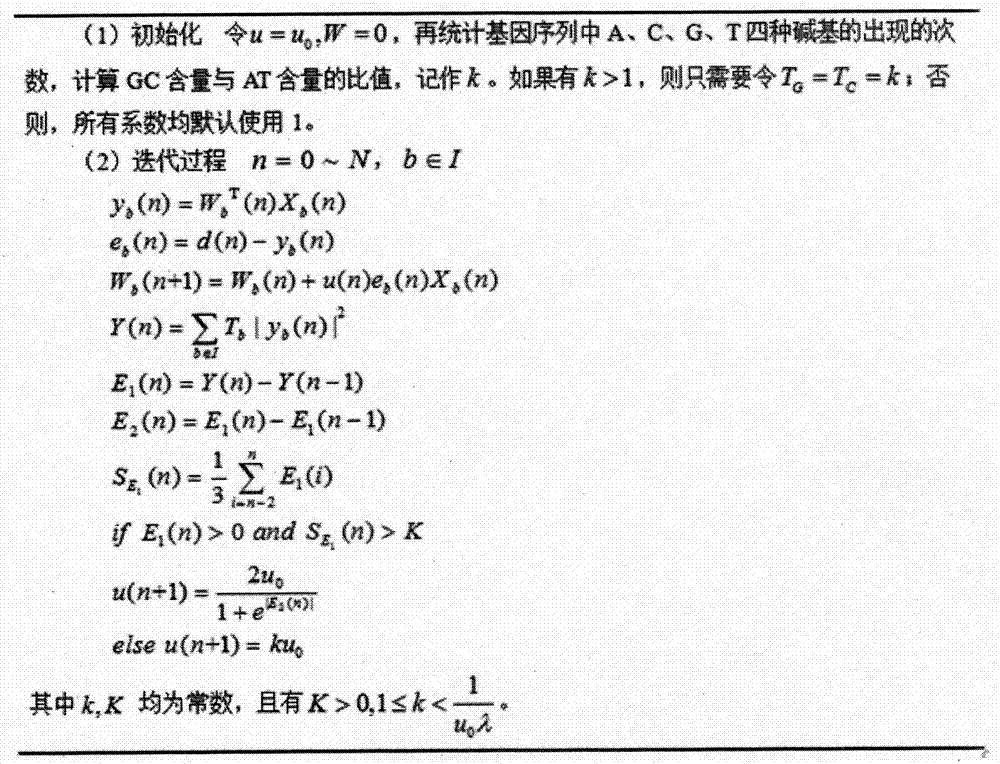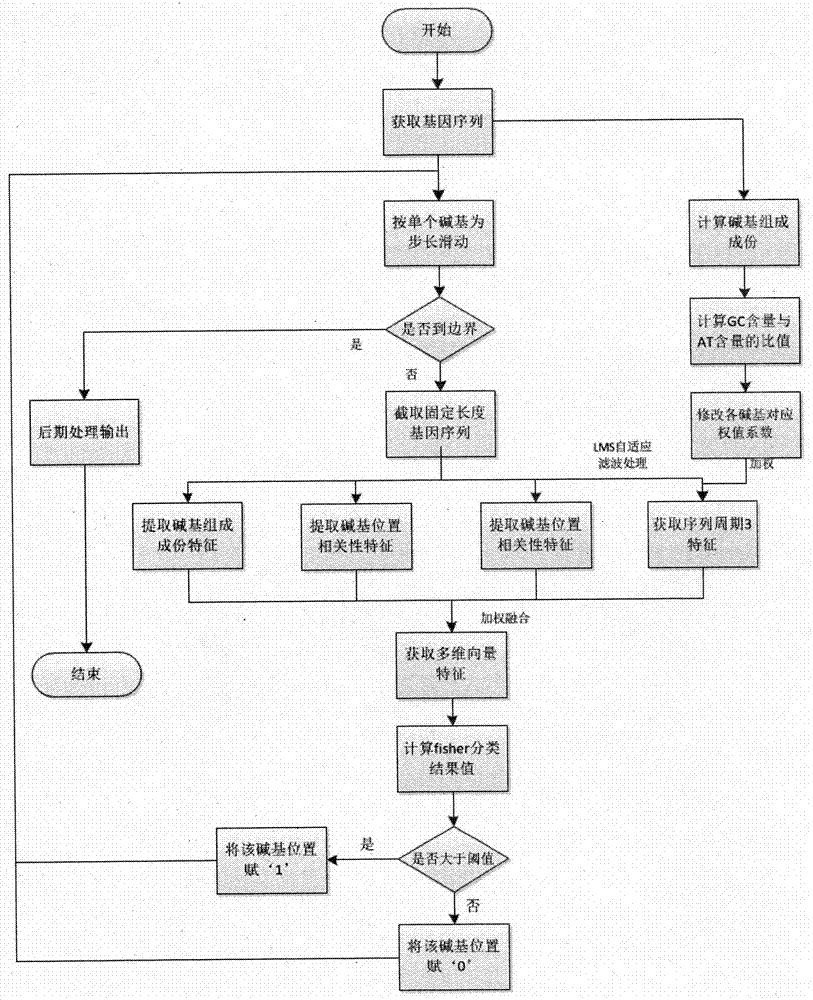Gene recognition system of self-adaptation filter based on variable step size minimum mean square error
An adaptive filter and minimum mean square error technology, applied in genomics, instruments, special data processing applications, etc., can solve the problems of large random noise in short gene sequences, various adjustment parameters, and difficult storage, etc., to improve recognition performance Effect
- Summary
- Abstract
- Description
- Claims
- Application Information
AI Technical Summary
Problems solved by technology
Method used
Image
Examples
Embodiment
[0053] Taking the input of a single DNA sequence as an example, the default system has pre-loaded the training parameter values of the relevant model from the configuration file. The recognition process is as follows: image 3 shown. The system starts to read an unknown input sequence each time, first counts the composition of the four bases A, C, G, and T, calculates the ratio of GC content to AT content, and updates the weight of each base corresponding to the filter output And save, so that when calculating the total power spectrum or signal-to-noise ratio value at sequence N / 3, the filter power spectrum output of a single base is weighted. Then use a single base as the step length to slide processing, and each time you slide a base position forward, it is judged whether it has reached the end of the sequence. If the feedback result is yes, it means that the entire sequence has been processed completely, and the system will automatically perform some necessary operation...
PUM
 Login to View More
Login to View More Abstract
Description
Claims
Application Information
 Login to View More
Login to View More - R&D
- Intellectual Property
- Life Sciences
- Materials
- Tech Scout
- Unparalleled Data Quality
- Higher Quality Content
- 60% Fewer Hallucinations
Browse by: Latest US Patents, China's latest patents, Technical Efficacy Thesaurus, Application Domain, Technology Topic, Popular Technical Reports.
© 2025 PatSnap. All rights reserved.Legal|Privacy policy|Modern Slavery Act Transparency Statement|Sitemap|About US| Contact US: help@patsnap.com



